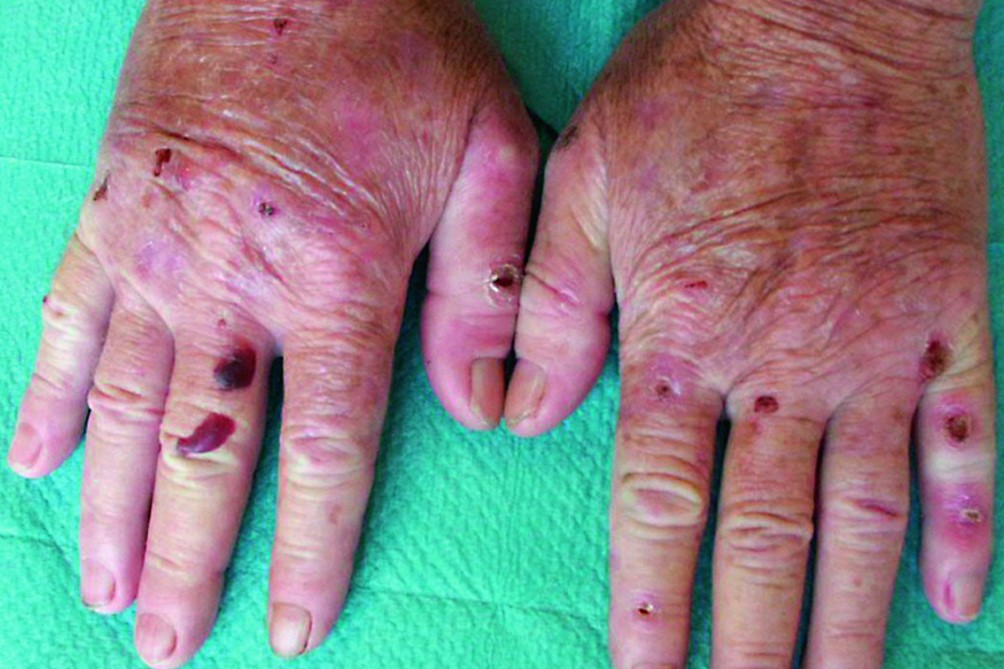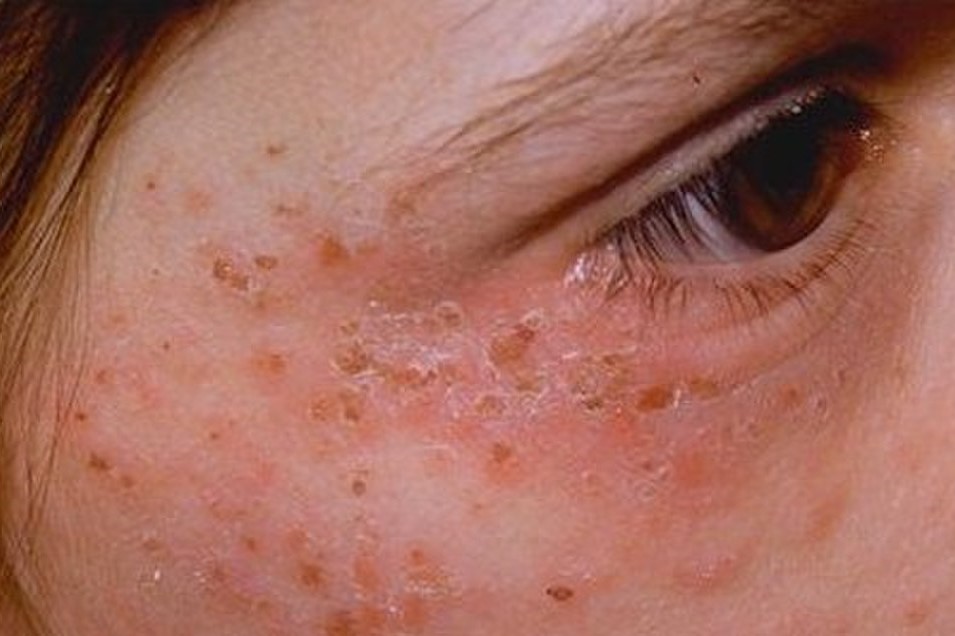
What is porphyria? Symptoms, diagnosis and treatment of this genetic disease
Porphyrias are a group of several diseases that can affect your skin and nervous system. Beginning in the metabolic system, porphyrias develop when a gene mutation disrupts the chemical process in your body that is responsible for creating blood cells
Porphyrins and porphyrin precursors are chemicals that your body uses to make heme.
Heme gives blood its red color and helps to create hemoglobin—the protein that carries oxygen through your blood.
When porphyrins and porphyrin precursors are not transformed into heme, they accumulate in your blood and other tissues and cause various symptoms.
Types of Porphyria
Porphyrias are generally split into two categories.2
- Acute porphyrias include four types that affect the nervous system and two types that may also affect the skin. The symptoms can last for several weeks.
- Subcutaneous porphyrias include four types that affect the skin. These types cause chronic symptoms.
Within each category, there are several types of porphyrias.
Acute Porphyrias
Although acute porphyrias do not cause chronic symptoms, the condition can still last for several weeks.
These types of porphyria develop when porphyrins and porphyrin precursors build up in your liver.
The porphyrias that fall into the acute category include:2
- Acute intermittent porphyria
- Delta-aminolevulinic acid (ALA) dehydratase deficiency porphyria
- Variegate porphyria
- Hereditary coproporphyria
Acute intermittent porphyria and ALA dehydratase deficiency porphyria both cause symptoms that affect the nervous system.
Variegate porphyria and hereditary coproporphyria affect the nervous system and the skin.
Cutaneous Porphyrias
Subcutaneous porphyrias are chronic conditions that usually last your entire life once they develop.
These types of porphyria only affect the skin.
Porphyrias that fall into the subcutaneous category include:2
- Porphyria cutanea tarda
- Hepatoerythropoietic porphyria
- Protoporphyrias (erythropoietic protoporphyria and x-linked protoporphyria)
- Congenital erythropoietic porphyria
Porphyria cutanea tarda and hepatoerythropoietic porphyria develop when porphyrins and porphyrin precursors build up in your liver.
Protoporphyria and congenital erythropoietic porphyria develop when the substances accumulate in your bone marrow.
Porphyria Symptoms
The symptoms of porphyria vary based on whether the condition is acute or subcutaneous, as well as by which type it is.
The potential symptoms of acute porphyrias include:32
- Abdominal pain
- Pain in the arms, legs, and back
- Constipation
- Nausea
- Vomiting
- Anxiety
- Confusion
- Hallucinations
- Seizures
- Urinary retention
- Urinary incontinence
- Changes in the color of your urine
- Skin blisters that develop after exposure to sunlight (variegate porphyria or hereditary coproporphyria)
The potential symptoms of subcutaneous porphyrias include:32
- Blisters
- Fragile skin
- Slow wound healing
- Skin that is easily infected or wounding
- Scarring
- Changes in skin color
- Weakness
- Blood pressure changes
- Increased heart rate
Two types of subcutaneous porphyria—erythropoietic protoporphyria and x-linked protoporphyria—are a bit different and do not cause blisters at all.
Instead, exposure to sunlight can cause people with these types of porphyria to have skin symptoms such as:
- Pain
- Burning
- Stinging
- Tingling
- Redness
- Swelling
Causes
There are eight steps to the process of creating heme—a component of hemoglobin in red blood cells.
Porphyrin and porphyrin precursors are part of the ingredients of heme.4
Enzymes—or substances in the body that trigger a chemical reaction—help transform porphyrin and porphyrin precursors into heme.
However, some people have a genetic mutation that affects their body’s ability to create these enzymes.
Without enzymes to trigger the transformation process, not enough of the porphyrins are changed into heme, and they build up in the blood and tissues.3
The most common genes that are affected by these mutations are:3
- ALAD
- ALAS2
- CPOX
- FECH
- HMBS
- PPOX
- UROD
- UROS
Diagnosis
It’s difficult to say how many people have some form of porphyria because some people with it never experience any symptoms.
It’s estimated that between 1 in 500 and 1 in 50,000 people have some type of porphyria, and porphyria cutanea tarda is the most common type.
These conditions are typically diagnosed through genetic testing—particularly if someone knows the condition runs in their family.3
If you do not have a family history of the condition or your family health history is unknown, your doctor may start by taking samples of your blood, urine, or stool for testing.
The level of porphyrin in these body fluids is used to make a diagnosis of porphyria, and your doctor might decide to do genetic testing as well.
Additional testing will help your doctor determine which type of porphyria you have.5
Treatment
There is no cure for any form of porphyria, but acute porphyria episodes usually subside in a matter of weeks.
Subcutaneous porphyrias—and even some acute porphyrias—can go through periods of flare-ups and remission.
Acute porphyria attacks are usually treated in the hospital, especially if someone is having moderate to severe neurologic symptoms.
The primary treatment for acute porphyrias is an intravenous infusion of heme cells that are isolated from donated blood.
These infusions can continue for several days.
In the meantime, any other symptoms will also be treated. Examples of treatments include beta-blockers to control heart rate, pain medications for comfort, and, in some cases, mechanical ventilation to help with breathing.6
Avoiding triggers like sunlight and making diet changes are key management strategies for subcutaneous porphyrias.
In terms of treatment, one option is called therapeutic phlebotomy, which is when you have blood drawn on a regular basis to reduce the concentration of certain compounds in your blood.7
Prognosis
There is no cure for porphyria, but the symptoms do not last forever.
Even in chronic forms of the disease, the symptoms will flare up and subside in cycles.
You can help prevent flare-ups from occurring by making changes like:7-3
- Quitting smoking
- Reducing alcohol consumption
- Avoiding exposing your skin to sunlight
- Avoid fasting and eat a healthy diet
- Reduce stress
There are also certain medications that can make the condition worse, including barbiturates, birth control (and other forms of hormone therapy), tranquilizers, and sedatives.7
RARE DISEASES? VISIT THE UNIAMO – ITALIAN FEDERATION FOR RARE DISEASES BOOTH AT EMERGENCY EXPO
Coping
Living with a rare disease can be difficult.
First, it can be difficult to get an accurate diagnosis.
Once you have one, you may have a hard time finding other people who understand what you are going through who can offer support.
There are a number of clinical trials looking at potential treatments for porphyrias, and you might consider enrolling in one if you’re eligible.
There are also several organizations that can offer resources and support as you learn to manage your condition.
Porphyria is a condition that is caused by a gene mutation that affects your body’s red blood cell production
This mutation causes a step in the cell-making process to be missing, which in turn causes certain chemicals (porphyrins) to build up in your blood and tissues.
When this happens, these chemicals can cause a variety of symptoms that affect your neurological system and skin.
There is no cure for porphyria, but there are medications and lifestyle changes that can help you manage your symptoms and avoid flare-ups.
References:
- Ramanujam VS, Anderson KE. Porphyria diagnostics-part 1: a brief overview of the porphyrias. Curr Protoc Hum Genet. 2015;86:17.20.1-17.20.26. doi:10.1002/0471142905.hg1720s86
- National Institutes of Health. Porphyria.
- National Institutes of Health. Porphyrias.
- American Porphyria Foundation. About porphyria.
- National Institutes of Health. Porphyrin tests.
- Pischik E, Kauppinen R. An update of clinical management of acute intermittent porphyria. Appl Clin Genet. 2015;8:201-214. doi:10.2147/TACG.S48605
- Cleveland Clinic. Porphyria.
Read Also:
Emergency Live Even More…Live: Download The New Free App Of Your Newspaper For IOS And Android
Pinworms Infestation: How To Treat A Paediatric Patient With Enterobiasis (Oxyuriasis)
Rare Diseases: Bardet Biedl Syndrome
Rare Diseases: Positive Results Of A Phase 3 Study For The Treatment Of Idiopathic Hypersomnia
Rare Diseases: Fibrodysplasia Ossificans Progressiva (FOP), A Study From Pennsylvania University
Intestinal Infections: How Is Dientamoeba Fragilis Infection Contracted?
Gastrointestinal Disorders Caused By NSAIDs: What They Are, What Problems They Cause
Intestinal Virus: What To Eat And How To Treat Gastroenteritis
What Is Proctalgia Fugax? Symptoms, Causes And Treatment
Internal And External Haemorrhoids: Causes, Symptoms And Remedies
Blood In The Stool: What Causes It And What Diseases It May Be Associated With



